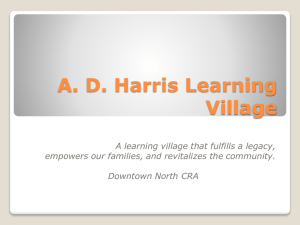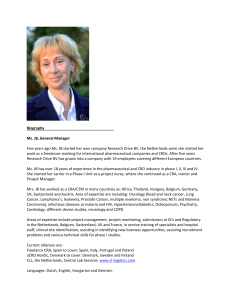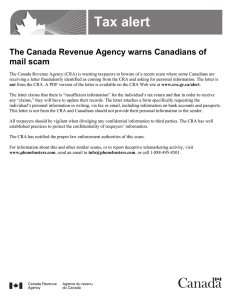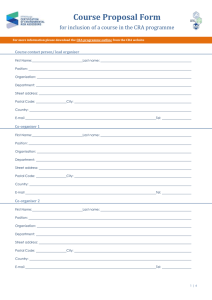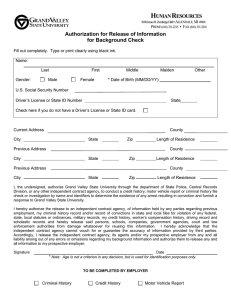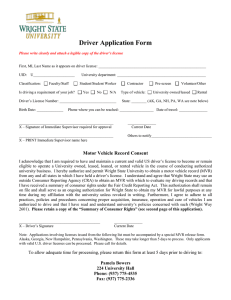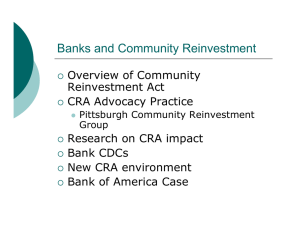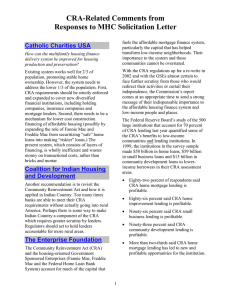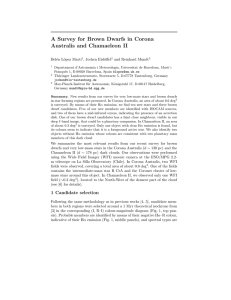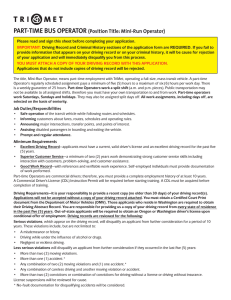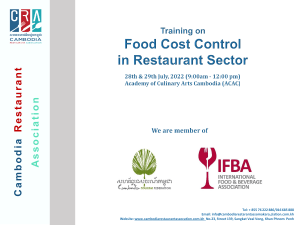Successful Communication between Sites, CROs, and Sponsors Caryn Hussar, MS
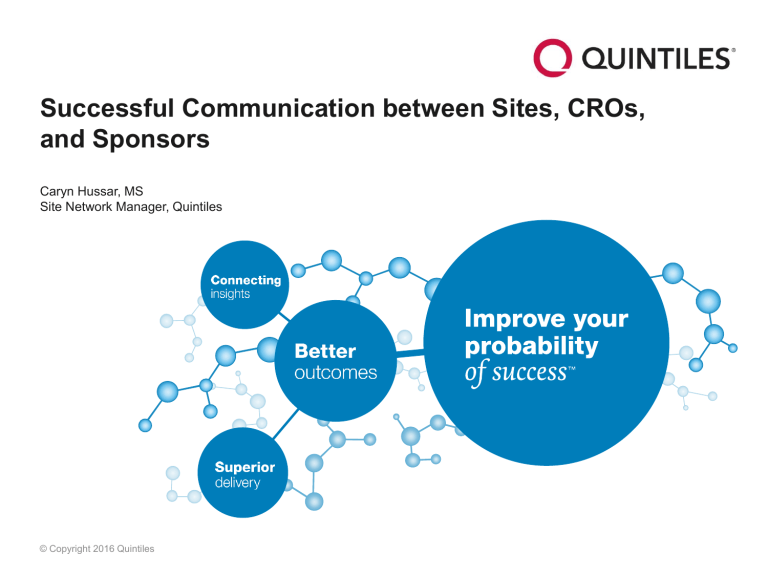
Successful Communication between Sites, CROs, and Sponsors
Caryn Hussar, MS
Site Network Manager, Quintiles
© Copyright 2016 Quintiles
Overview
• Common barriers to effective communication
• Working together to overcome these barriers
• Communication best practices and skills
• The Who, When, and How of Communication
• The GROW technique
• Putting skills into practice—scenarios.
• Why successful communication is important
2
“The single biggest problem in communication is the illusion that it has taken place.”
~George Bernard Shaw
3
Discussion: think of a situation when there was a breakdown in communication. What caused it?
Think about someone with whom you communicate well —what qualities does your communication have?
4
Common Barriers to Effective Communication
What gets in the way of our ability to understand and be understood?
Volume
• The sheer amount of e-mail, telephone calls, text messages, and instant messages we receive in a day can be daunting.
• Sometimes it’s difficult to know what to prioritize when we are “getting hit from all sides.”
Multitasking
• We are all so busy that we resort to multitasking out of necessity, even when it’s not the most efficient way to get things done.
• Constant interruptions and distractions can prevent us from truly processing information.
Cultural/Language/Mode of Communication Barriers
• We work in a global environment.
• It’s sometimes difficult to gauge tone from an e-mail, which can result in potential misunderstandings. It’s important to choose the right mode of communication for your message.
5
How can we work together to overcome these barriers?
Practical solutions for improved quality of communication in our work environment
6
Communication Best Practices
Handle conflicts with diplomacy.
• Nip issues in the bud.
• Keep conversations confidential.
• Stay open-minded and nonjudgmental.
• No personal attacks.
Give good feedback.
• Make it clear and detailed.
• Propose solutions if there is a problem.
• Don’t forget positive feedback.
7
Communication Best Practices
Take emotions out of the equation.
• Don’t make it personal.
• Ask for clarification to make sure you are on the same page.
• Make sure your intentions aren’t misconstrued.
• Take a deep breath, count to 10.
Don’t just hear, listen .
• Pretend there will be a quiz.
• Try to keep a mental checklist.
• Recall 3 things the person said.
• Repeat back what the person said.
8
Tips to remember for good communication
• LISTEN: communication does not just mean speaking, it involves listening.
• Pay attention to non-verbal communication, your own and others’.
• Know your audience.
• The message sent isn’t always the message received.
• Get to the point.
9
Tips to remember for good communication
• Pay attention to non-verbal signals:
• Be aware of individual differences.
• Don’t read too much into a single gesture or cue—consider signals as a whole.
• Match non-verbal with verbal.
• Adjust to the context.
• Use body language to convey positive feelings.
• Engaged listening:
• Focus fully on the speaker.
• Avoid interrupting.
• Show interest in what’s being said.
• Try to set aside judgement.
• Provide feedback.
10
Tips to remember for good communication
• Keep stress in check:
› Stay calm under pressure.
› Pause to collect thoughts. Use stalling tactics if necessary.
› Speak clearly.
› Make one point.
› Summarize then stop.
• Assert yourself:
› Value yourself and your opinions.
› Know your needs and wants.
› Express thoughts in a positive way.
› Receive feedback positively.
› Learn to say no—Know your limits..
11
The Who, When, and How of Communication
Making communication efficient and effective.
Who
Who can help me?
• Study Start-up Team
• CRA—your first point of contact
• Project Team/Medical Monitor
• Site Network Manager
When
On-site monitoring visits
• Site Selection Visits
• Site Initiation Visits
• Interim Monitoring Visits
Investigator Meetings
• Sponsor, Sites, & CRO together
• Great F2F opportunity
Day-to-Day
• Set aside time
• When urgent, don’t hesitate to use the phone
How
• Concise and clear (less than 4 sentences when possible)
• Provides a trail
Face-to-Face*
• Good for involved discussions
• Less room for confusion
Phone*
• Best for immediate needs or questions that might cause too much “back & forth” in e-mail.
*reminder to document any F2F discussions or phone calls in a follow-up e-mail.
12
The GROW technique
GOAL
• What is the common objective?
REALITY
• What is the current situation? What obstacles are there to meeting the goal?
• Issues, challenges, how far away are we from the goal?
OPTIONS
• Using brainstorming and collaboration to determine several possible options.
WAY
FORWARD
• Choosing one of more options and working together towards the goal. Action steps.
13
Putting Communication Skills Into
Action
Scenario 1
•Your CRA has contacted you regarding open queries that need to be closed for a database lock. She is asking that they be done by the end of the day. Your schedule is packed today with seeing patients. How would you approach this situation?
14
Putting Communication Skills Into
Action
Scenario 2
You are working on a study in which enrollment has slowed down. The sponsor has asked the CRA to discuss recruitment at your site. One of the issues is that there is an exclusion criteria that is preventing you from enrolling subjects as quickly as the sponsor would like. How would you handle the discussion with the CRA?
15
Putting Communication Skills Into
Action
Scenario 3
Your CRA has just been on site for a 2-day visit.
When you checked in with him, he said that everything was going fine and didn’t provide any feedback. Several days later, you get a follow-up letter with a long list of Action Items, some of which could have been addressed during the visit. How would you respond to this?
16
Why is successful communication so important?
• Our jobs are patient-centric. Successful communication allows us to:
› safely care for the patients currently in our studies.
› contribute to the development of medications for future patients.
• It saves time.
› it cuts down or eliminates re-work—helps everyone “get it right the first time.”
› it minimizes back & forth e-mails and phone calls.
• It prevents frustration.
› knowing your “go-to” people will speed up the process to getting answers you need.
17
How else does communicating well benefit me?
Good communication skills:
• Are sought after
› Writing skills
› Presentation skills
• Are critical for leadership.
• Are recognized as part of a manager skill set.
• May improve your chances of employment or promotion.
• Will set you apart.
18
Summary
• We encounter barriers to effective communication on a daily basis.
• These barriers to communication can be overcome by working together.
• Knowing the who, when, and how of communication will facilitate this.
• Successful communication is vital for the best patient care, efficiency, and minimal frustration.
19
Questions?
20
Safety and care of patients are at the center of our core values and everything we do.
21
